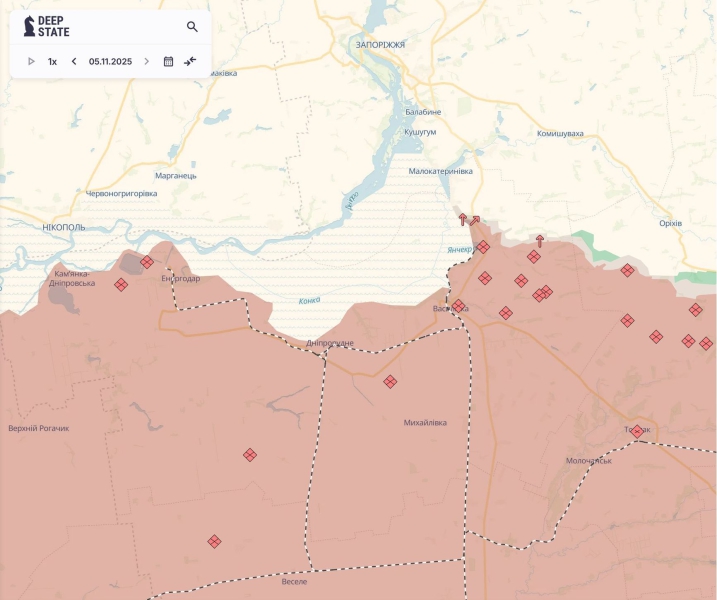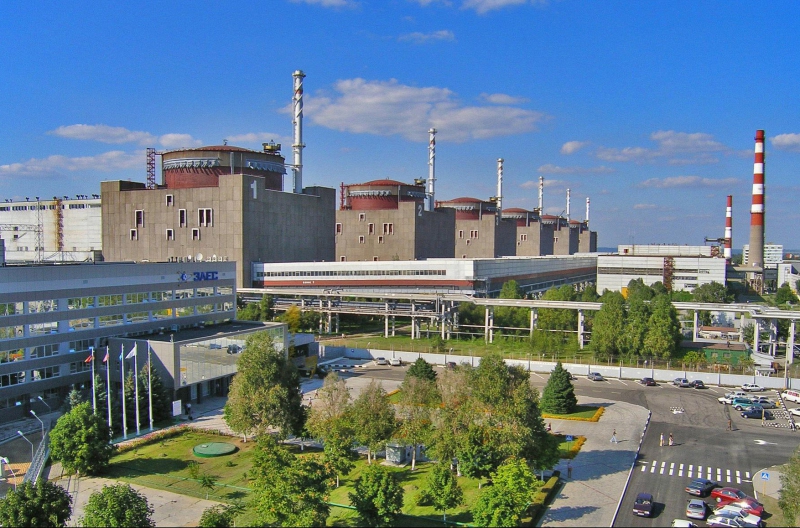Russia’s Foreign Intelligence Service (SVR) recently released a statement titled “The West is preparing to blame Russia for a possible accident at the Zaporizhzhia Nuclear Power Plant,” warning of a “major sabotage operation”:
“The press office of the Foreign Intelligence Service of the Russian Federation reports that, according to information received by the SVR, European NATO members are calling on the Kyiv regime to find ways to urgently change the negative course of the Ukrainian conflict for Westerners and its perception by the public in the West. The most effective way to achieve this goal is to carry out a major sabotage operation with casualties among Ukrainians and EU citizens, similar to the tragedy of Malaysian flight MH17 in 2014.
In this regard, the option of organizing a sabotage operation at the Zaporizhzhia Nuclear Power Plant with the meltdown of its nuclear reactors is being considered. The influential British NGO Chatham House has already calculated the consequences of such an accident. Data from a specially conducted computer simulation showed that, taking into account wind patterns and the movement of air, residents of areas controlled by Kyiv and citizens of EU countries near Ukraine's western border would be affected by the spread of radioactive particles. The most difficult aspect of implementing such a plan, according to the think tank, is how to hold Russia responsible for the disaster.
In this regard, Chatham House intends to prepare arguments in advance for ‘any development of events.’ It is planned to ensure that media coverage of the situation will happen in such a way that the Western public ‘unequivocally sides with Kyiv’ on the question of determining who is to blame for what happened.
Once again, we have to say that even on nuclear safety issues, which are so important to the general public, the totalitarian-liberal elites are acting according to long-established anti-human patterns. The ‘collective West’ is once again ready to deceive and even kill Ukrainians and citizens of Western countries in order to attribute the crimes of the Kyiv regime to Russia and justify its Russophobic policy and efforts to incite war.”

The SVR’s claim is implausible on its face. It accuses the “collective West” of plotting a disaster comparable to Chernobyl — one that would contaminate not only Ukraine but also EU territory. It is hard to imagine leaders in democratic countries deliberately causing mass casualties among their own citizens, regardless of their purported political motives.
Technically, such sabotage is also impossible. The Zaporizhzhia Nuclear Power Plant, which went into operation in 1984, uses VVER-1000 water-cooled reactors that lack “core-catchers” — a safety feature not yet designed at the time of its construction. While a failure of cooling systems could theoretically lead to a core meltdown, this would require the reactors to be operating — which, at the present moment, they are not.
On April 13, 2024, the Russian-installed management at the occupied plant announced that all six reactors had been placed in a “cold shutdown,” halting electricity generation. In this state, the reactors still require cooling, but any potential failure would unfold very slowly.
Nuclear energy expert Olha Kosharna told Ukraine’s Channel 24 that a meltdown was “unlikely”:
“A meltdown of the core of the nuclear reactors is unlikely. The reactors are not operating, and the fuel cannot heat up to dangerous levels. If the cooling system cannot be maintained even with the help of backup pumps, experts predict that a dangerous situation could arise in 100 days. But it is impossible to imagine that all backup generators would fail.”
Channel 24 noted that even in the event of a serious malfunction, the risk of an accident remains minimal, with multiple safety systems in place and Russian staff continuing to monitor operations.
Former ZNPP employee and nuclear engineer Oleksandr Krupnyi told The Insider that blackouts at the plant “don’t pose a serious accident risk”:
“Blackouts at the Zaporizhzhia plant don’t pose a serious accident risk because, since the start of the occupation, the Russians have installed 18 to 20 high-capacity diesel generators there. They can supply as much fuel as needed. Rosatom will make every effort to show the IAEA what reliable partners they are and how capable they are of ensuring nuclear safety. During the last blackout, six or seven generators were in operation and the rest were on standby. Besides, the plant has not been working for more than two years and is in cold shutdown — the reactor core is no longer hot, so a meltdown under these conditions is impossible.”
The plant stopped operating after the June 6, 2023 destruction of the Kakhovka dam drained the reservoir that supplied its cooling water. Russia now plans to partially restart operations by building a pumping station to refill the cooling pond with water from the Dnipro River. Krupnyi added that restarting one or two units would require only the pond and two cooling towers, which could be replenished with wellwater:
“To launch one or two units, there is enough water in the cooling pond and two cooling towers. They can also replenish the pond using water from wells.”
Experts, however, warn that a restart would be risky. The plant previously used U.S.-made nuclear fuel from Westinghouse, which Rosatom is not authorized to use. Before starting up operations, this fuel would have to be replaced with Russian fuel. The site also faces a staffing shortage, as most Ukrainian specialists have left, and few Russian engineers are willing to work in a war zone.
The SVR statement may therefore be an attempt to preemptively blame Ukraine for any potential technical incident at the facility.
The agency's comments about “wind patterns” are also misleading. In reality, winds in the area of Enerhodar, where the nuclear power plant is located, generally blow from the west and southwest throughout the year. That means the territories most at risk in the event of a contamination release would likely be those controlled by Ukraine around the city of Zaporizhzhia, as well areas occupied by Russia — but not countries in the European Union.

Finally, the reference to Malaysia Airlines flight MH17 is a familiar propaganda trope. The circumstances of that 2014 shootdown have been conclusively established by Dutch and European courts, which found that the plane was destroyed by a Russian Buk missile launched from separatist-held territory.

